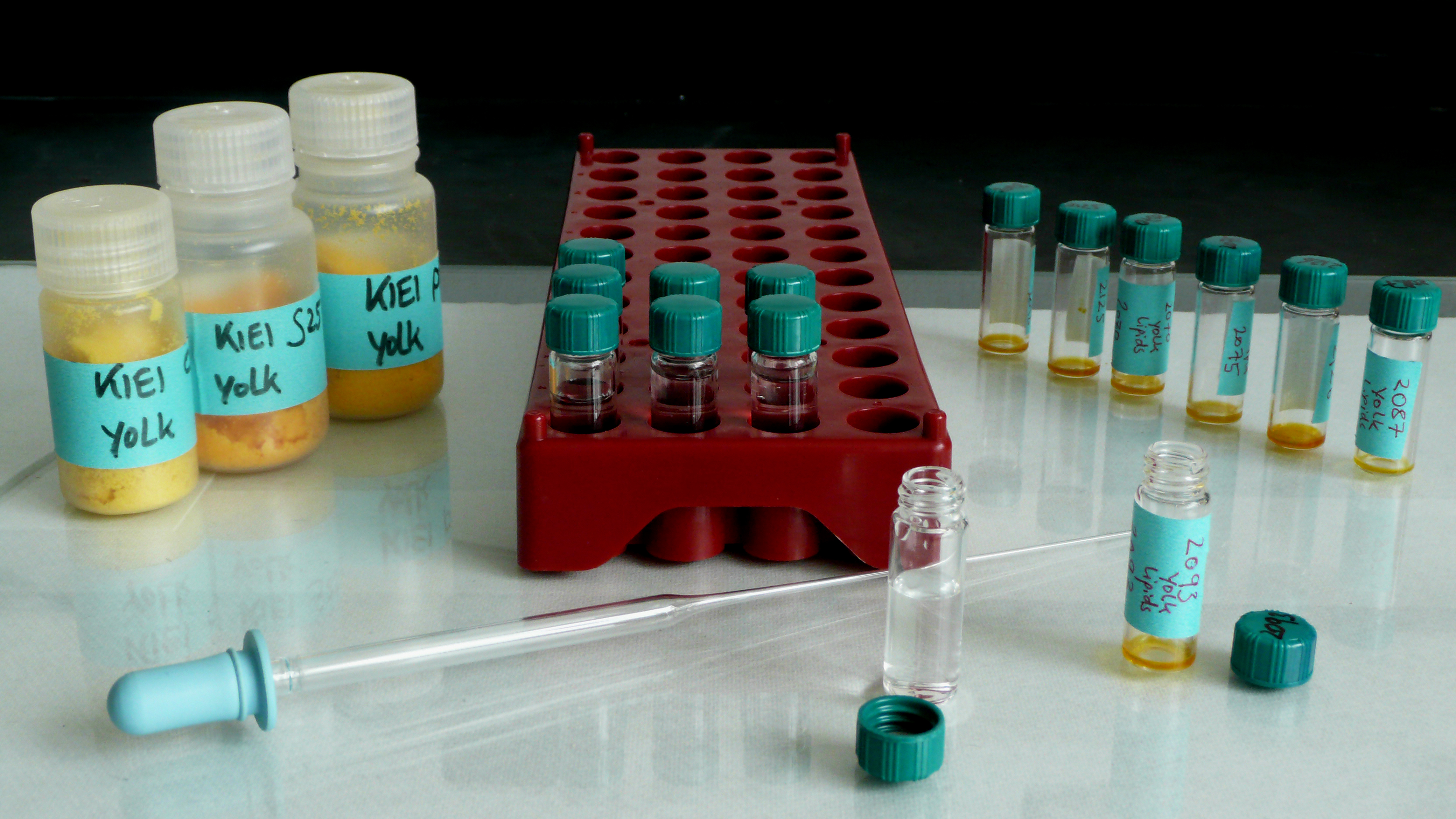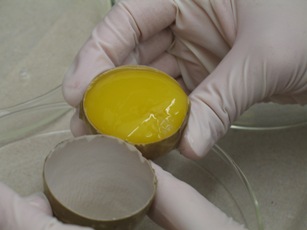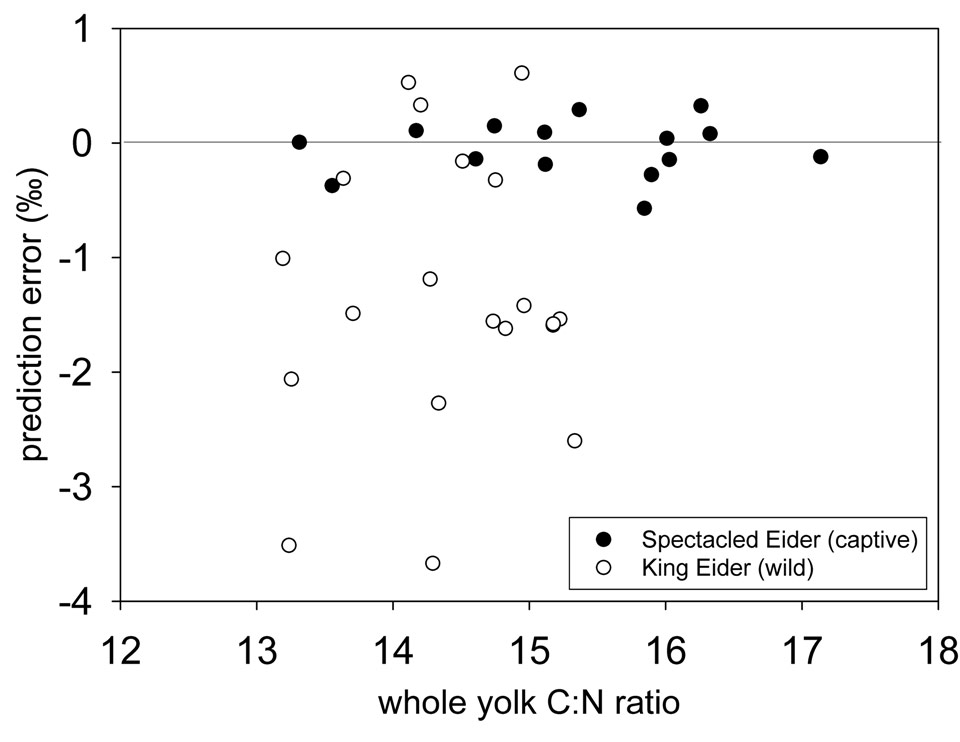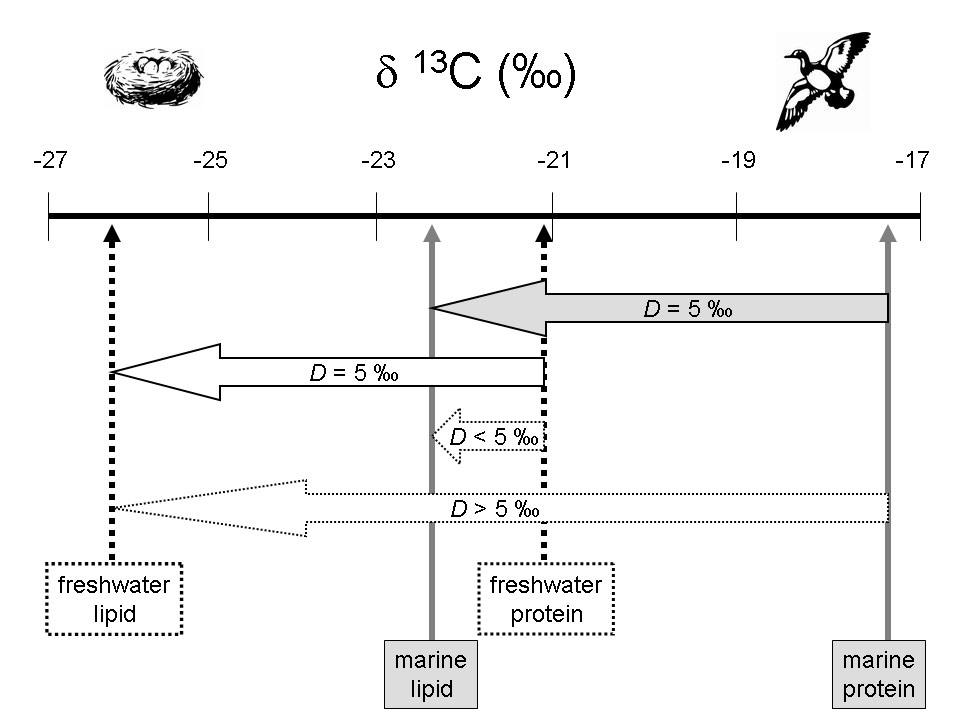
Using isotope ratios has become an important technique to investigate nutrient pathways in ornithological studies. One popular application of this technique is to quantify the origin of nutrients allocated to eggs. Dry egg yolk contains > 50% lipids, which are known to be depleted in carbon isotope ratios compared to protein. This can lead to ambiguous results of isotope studies unless lipids in egg yolk are accounted for specifically.
Currently, most researchers remove lipids from egg yolk with a chemical lipid extraction procedure before analyzing the isotopic composition of protein in egg yolk. We found that this procedure significantly altered nitrogen and sulfur isotope ratios in eggs of 20 wild King Eiders and 15 captive Spectacled Eiders housed at the Alaska SeaLife Center. We therefore do not recommend that nitrogen or sulfur isotope ratios of lipid-extracted yolk samples are used for inference in isotopic studies.


